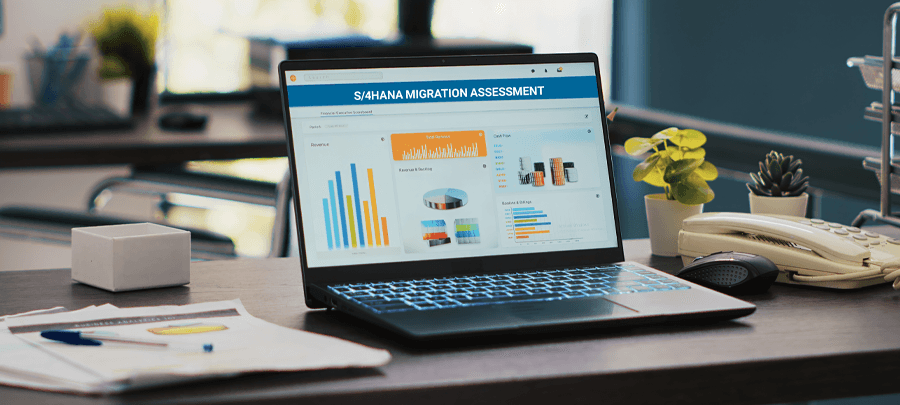Now is the time to move: migration from AFS to S/4HANA for fashion and vertical businesses
12 July 2021


Richard Pascoe
Vice President - Consulting ServicesRichard Pascoe is the VP- Consulting Services, Applexus Technologies, UK. An experienced leader and business development manager, Richard has been accountable for the success of the...
Fashion has always been a fast-paced and sensitive industry. With customer expectations fluctuating rapidly, delivering a superior shopping experience is not an easy task. Fashion companies are facing new hurdles in the wake of production and procurement departments becoming increasingly digitalized. Due to this, we are seeing retailers create their own brands, as well as brands offering merchandise through their own channels.
These businesses are managing their own supply chains, including suppliers, logistics, warehouses, distributors and retail locations. This vertical integration has made system migration in the fashion industry all the more difficult, necessitating the use of appropriate technology to ensure that all operations work smoothly and in harmony.
SAP AFS and the fashion industry
SAP fashion customers have been managing multiple system landscapes over the previous decade: SAP Retail, primarily used by brick and mortar stores, and SAP AFS, used by the brand manufacturers.
SAP Retail for merchandise management 1610 already had fashion-related features that were originally developed for SAP Fashion Management on ERP. However, it wasn't until the 1709 release that fashion received serious consideration, with features like "fashion wholesale criteria" and "fashion manufacturing" included in feature pack stack 02.
SAP AFS provided industry-specific workflows for wholesalers that enabled employees, consumers, and business partners to collaborate productively anywhere, at any time. However, as manufacturers expanded into the retail business and began to launch their own private labels, they quickly discovered that the AFS platform alone was unfit for retail trade scenarios.
Retailers, on the other hand, who began merging their retail and manufacturing processes found that their entire business could no longer be managed on the SAP Retail platform alone. So the vertically integrated fashion companies had no alternative but to operate these divisions separately utilizing two ERP systems: SAP AFS and SAP Retail.
The proliferation of two or more ERP systems, together with scattered peripheral applications, posed a slew of new issues for fashion companies, limiting their ability to respond to new and evolving market trends quickly.
These issues were further accelerated with the spread of COVID-19 forcing almost every retail business, with the exception of grocers and pharmacies, to close their doors, resulting in a significant decline in trade. The legacy AFS systems were found to be inadequate for manufacturers to open their own channels to consumers, as their traditional customer and supply chain demands fluctuated.
Why SAP S/4HANA for fashion and vertical business?
SAP S/4HANA for fashion and vertical business was released in September 2017, allowing fashion companies to change business models, reengineer business processes, and reinvent their work in order to intelligently match demand and supply. SAP S/4 Fashion is what SAP calls vertical simplicity, providing the opportunity to run one simple S/4HANA platform for all channels (wholesale, retail, e-comm, manufacturing, and a single Global Inventory).
SAP S/4HANA spans the entire value chain and allows next-generation real-time processes with in-built embedded analytics, saving the customers time and money. This end-to-end solution enables fashion organizations to gain insights from operational data and empower users with contextual, real-time data for faster and better decision-making. SAP S/4 Fashion satisfies the new customer expectations with a wide range of sophisticated features for production planning, inventory management, order promising, and more, ushering in a new era of intelligent and connected digitized supply chains.
The 1809 release on top of the simplified IT landscape, came with significant added functionality across all solution areas and provided a single view of stock across the entire business from raw material to items in a consumer’s basket.
Functionality like advanced available-to-promise (AATP) in SAP S/4 Fashion improves visibility, profitability, and customer satisfaction for both wholesale customers and store merchandisers, even when the organization has limited stock and uses a first come first served scenario. These allocations ensure that the interests of top priority clients or stores are preserved.
Companies also require flexibility in order to accommodate changes at a moment’s notice. They frequently receive last-minute requests to modify orders before deliveries, after overnight backorder processing or a particularly busy trading day. Using a five-category set-up, the organization can rapidly determine where they can draw the additional items with revised backorder processing.
All the recent key innovations combined with SAP Fiori's simple and intuitive interface and SAP HANA's speed, allow fashion firms to develop smarter, faster designs based on a common data set. This also simplifies their IT infrastructure and business operations.
Recent key innovations in SAP S/4HANA for fashion
- Flexible Purchasing Commitments: One single procurement process across many channels and operating models, with the ability to postpone final purchase order decisions to correspond with the most recent market signals and flexibly mix and divide order quantities.
- Supply Demand Overview (SDO): Full visibility and control over the current supply and demand situation at all levels, using pre-defined and/or custom KPIs.
- Decision Support Fiori Apps in the area of Supply Assignment: Multiple supply assignment simulations and release check simulations are compared and potentially executed to fulfill orders seamlessly across channels by optimizing stock usage through smart, rule-based assignment and simulation, as well as smart and simulative release processes to optimize deliveries and reduce chargebacks.
- Managing Season Completeness: Provides the user with an overview of articles in chronological sequence and allows managing seasons (season/collection/theme) in a way that maximizes the sale of the products and increases profits by ensuring timely delivery.
Approach to S/4HANA migration
SAP offers multiple ways to move to the latest version of their Retail and Fashion Solution either through programs like RISE with SAP or through Cloud based solutions. These provide flexible scaling options reducing hardware risk, dependencies as well as cost of ownership.
Applexus also has multiple approaches to project delivery with a methodology to suit a variety of customer requirements. Considering that each customer is different, has a different level of customization and attitude towards risk, our RunningStart methodology keeps risk to a minimum whilst still delivering to customer needs.
Applexus RunningStart: S/4HANA implementation methodology
Applexus’ "RunningStart" methodology is a superior approach to modernization and S/4 migrations that includes a set of proprietary tools and strategies created over the course of dozens of successful deployments of SAP S/4HANA. This makes S/4 migrations lower-risk, faster, better, and cheaper through continuous transformation. ‘RunningStart' combines best practices, pre-configurations, and industry-specific accelerators to provide SAP implementation projects the agility that they demand. This methodology transforms your S/4 migration processes to match with SAP standard products and industry best practices using the SAP Activate methodology, resulting in a lower TCO.
Applexus RunningStart- S/4 Implementation Methodology

24 years have passed by since the first AFS 1.0D release and five years since the latest enhancement pack release for AFS. With business requirements continually changing, blurring of additional lines between manufacturing and retail and the need to serve consumers in different ways at different times – SAP have responded with a better, functionally rich software, making business more agile across a single platform regardless of vertical.
This, coupled with Applexus’ experience and methodology safeguarding your business, means now is the time to move.











